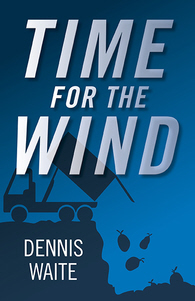 Readers of this blog, and its associated website www.advaita.org.uk, will (I hope!) associate my name with my books on Advaita, which have been published fairly regularly since 2003. What very few people know is that I have also written a novel! In fact, this was the first book I wrote. I actually began it around 1974, while I was working as a contract computer programmer and temporarily idle. Unfortunately (I was still being paid), I was not idle for very long and the book was not completed until 1982! Since then I have revised/rewritten it four times! I did attempt to get it published back in the nineteen eighties, but without success. Earlier this year (after completing ‘A-U-M’), I decided the time had come, even though I have had to subsidise the publication as I am not recognised as an author of fiction.
Readers of this blog, and its associated website www.advaita.org.uk, will (I hope!) associate my name with my books on Advaita, which have been published fairly regularly since 2003. What very few people know is that I have also written a novel! In fact, this was the first book I wrote. I actually began it around 1974, while I was working as a contract computer programmer and temporarily idle. Unfortunately (I was still being paid), I was not idle for very long and the book was not completed until 1982! Since then I have revised/rewritten it four times! I did attempt to get it published back in the nineteen eighties, but without success. Earlier this year (after completing ‘A-U-M’), I decided the time had come, even though I have had to subsidise the publication as I am not recognised as an author of fiction.
I usually describe the novel as an ‘ecological thriller’, since the action revolves around a landfill site and waste disposal. The science fact also develops quite quickly into science fiction. By the time of the third iteration, however, I had reworked the material to introduce aspects of philosophy, with emphasis (surprise, surprise!) on Advaita. Originally, there had been lots of quotations from T. S. Eliot, but I discovered when writing ‘Back to the Truth’ that copyright permission for lots of Eliot quotes would be both difficult and expensive to obtain. Then I had the brainwave of changing one of the main characters from someone calling himself ‘Elyot’ (T. S. Eliot’s grandfather) to someone calling himself ‘Krish’ (short for ‘Krishna’). And, of course, I used quotations from the Gita instead of from ‘The Four Quartets’.
‘Krish’ only communicates via computer and, in addition to helping the principal character with his investigations into the waste disposal activities, he also discusses matters of Self-inquiry. Blending these elements without artificiality was quite difficult but I think I have succeeded. I was asked to write a blog on these writing aspects for the publisher to tie in with publication in early December. I reproduce this below, together with an extract from the book. (I will post another extract in a few weeks.) Continue reading →
 An Explanation of the Ending
An Explanation of the Ending